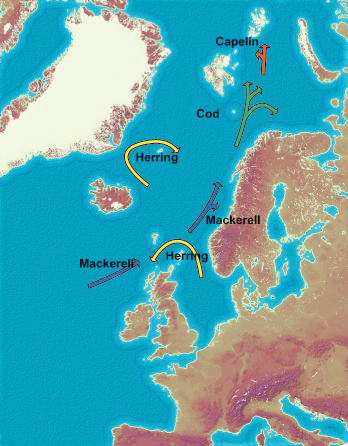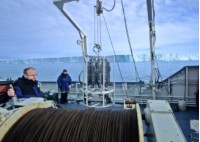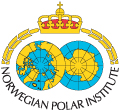The sea is getting warmer
Why?The predominant wind systems which help to drive the Gulf Stream and which blow water up to the Arctic have changed in recent years. Measurements show that they are dragging with them more Atlantic water that is warmer and has a higher salinity than the Arctic water. However, the measurements also show that even though the Gulf Stream has recently become warmer, it has not grown weaker. Another important reason for the warming of the water masses is the albedo effect. When the sea gets warmer and the white ice melts, more solar heat is absorbed by the dark seawater and the water temperature rises. This explains why several fjords in Svalbard have been ice-free in recent years. What is taking place?Even though there is no reason to worry that the ocean currents will halt or collapse, the amount of new heat may bring major changes, both locally in the Arctic and globally. Owing to more movement of molecules, a warm sea has greater volume than a cold sea and when the sea is heated it will increase in volume, leading to changes in sea level (thermal expansion). The oceans are large and are enormous energy stores. They are heated slowly and retain the heat for a long time, long after the heating has ceased. It takes years to transport heat down to the ocean depths. Even if we stop emitting greenhouse gases today, the sea will get warmer and warmer, and rise for the next 20 years. Half of the present-day change in sea level derives from thermal expansion, and measurements show that between 1993 and 2003 the sea rose by about 1.6 mm per year due to thermal expansion alone; the supply of meltwater from glaciers comes in addition to this. The sea level is thus rising because the seawater is getting warmer and glaciers are melting. In a warmer sea, the composition and properties of the water column shift and this may be important for plankton production in the Arctic. When the sea gets warmer and the salinity changes, this may lead to changes in the vertical mixing and have a negative effect on plankton. A change in the circulation pattern will affect the production of plankton which, in turn, will influence life higher up the food chain (see also the plant life in the sea page). On the other hand, it is conceivable that a warmer sea and less extensive sea ice will give more plankton production and an expansion in the fish stocks in the area because the fish will have a larger area to live in. It is expected that cod, capelin and herring will all move further north. A rise in the water temperature will also give higher growth rates in farmed fish. However, there are also negative prospects, even though fish stocks will rise. An increase in temperature will probably mean a decline in the shrimp stock. At the same time, shrimps are important food for cod, and if this food disappears, the cod will not derive any benefit from having warmer water and a larger area to live in. If the water becomes much warmer, the aquaculture industry will also experience a negative impact in that the temperature tolerance of salmon and trout will be exceeded and pens will have to be moved, which will be costly. Moreover, diseases and toxic algae that are harmful to the industry are likely to appear.
 The figure shows the expected movement of various fish as the sea gradually gets warmer – cod and capelin will emigrate further north in the Barents Sea. This not only has consequences for the creatures that feed on these species, but also for we who fish them. In a few years, the traditional Lofoten fishery may be history, whereas the fishery along the coast of Troms and Finnmark may experience a boom. The figure shows the expected movement of various fish as the sea gradually gets warmer – cod and capelin will emigrate further north in the Barents Sea. This not only has consequences for the creatures that feed on these species, but also for we who fish them. In a few years, the traditional Lofoten fishery may be history, whereas the fishery along the coast of Troms and Finnmark may experience a boom.Illustration: Audun Igesund, NPI, after ACIA |
   |




